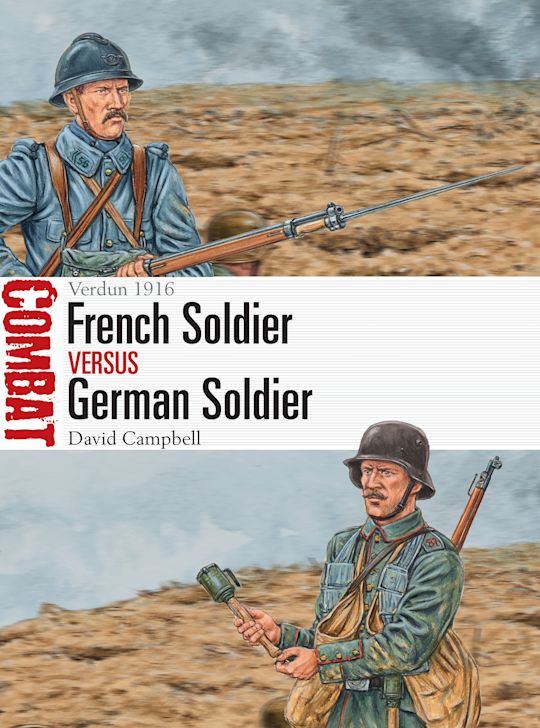You must sign in to add this item to your wishlist. Please sign in or create an account
On 21 February 1916, the German Army launched a major attack on the French fortress of Verdun. The Germans were confident that the ensuing battle would compel France to expend its strategic reserves in a savage attritional battle, thereby wearing down Allied fighting power on the Western Front. However, initial German success in capturing a key early objective, Fort Douaumont, was swiftly stemmed by the French defences, despite heavy French casualties. The Germans then switched objectives, but made slow progress towards their goals; by July, the battle had become a stalemate.
During the protracted struggle for Verdun, the two sides' infantrymen faced appalling battlefield conditions; their training, equipment and doctrine would be tested to the limit and beyond. New technologies, including flamethrowers, hand grenades, trench mortars and more mobile machine guns, would play a key role in the hands of infantry specialists thrown into the developing battle, and innovations in combat communications were employed to overcome the confusion of the battlefield. This study outlines the two sides' wider approach to the evolving battle, before assessing the preparations and combat record of the French and German fighting men who fought one another during three pivotal moments of the 10½-month struggle for Verdun.
| Published | Mar 19 2020 |
|---|---|
| Format | Ebook (PDF) |
| Edition | 1st |
| Extent | 80 |
| ISBN | 9781472838186 |
| Imprint | Osprey Publishing |
| Illustrations | Colour artwork plates and maps; black & white and colour photographs and illustrations. |
| Series | Combat |
| Short code | CBT 47 |
| Publisher | Bloomsbury Publishing |
This book gives a good idea of just how brutal the fighting around Verdun was
Historyofwar.org

Tell us what titles you would like to see published by Osprey, then vote for your favourites in our monthly book vote!
Your School account is not valid for the Canada site. You have been logged out of your account.
You are on the Canada site. Would you like to go to the United States site?
Error message.

